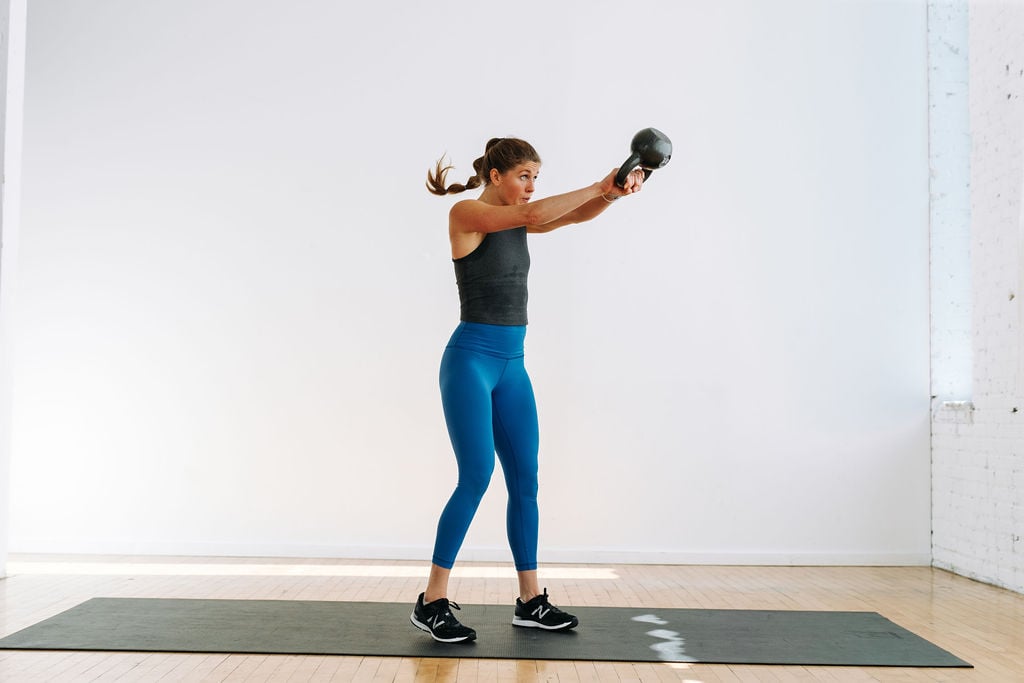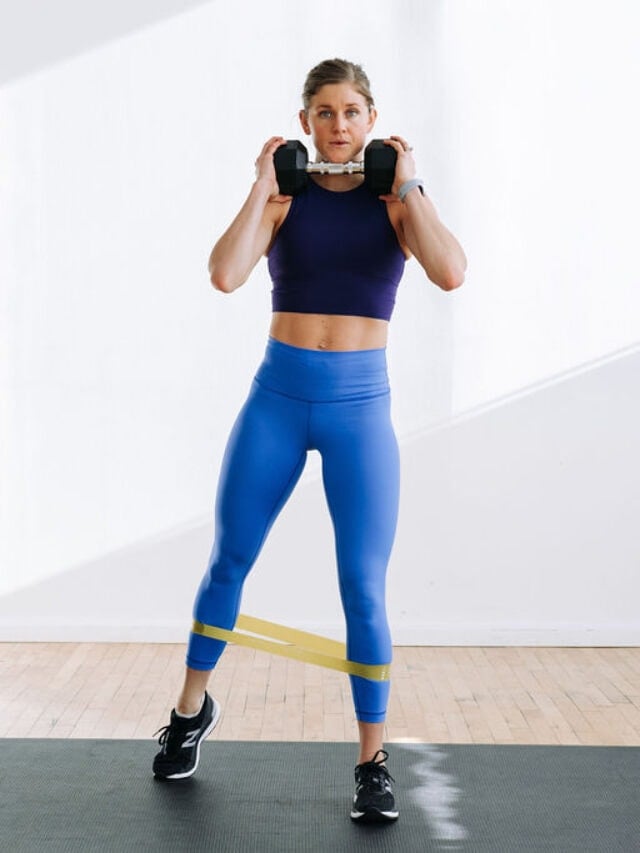

5 Best Leg Workouts for Runners
Improve running performance, increase power and speed, and prevent injury with the five best leg workouts for runners. Learn how to effectively add strength workouts to your running plan with five of my favorite leg workouts for runners!

Lower body workouts are an essential part of a runner’s training routine!
Strength training is the foundation of endurance training. And scientific research shows that cross training, or incorporating weights into your training routine, can increase your speed and VO2 max.
A well-rounded lower body workout can strengthen the power-generating muscles runners rely on, as well as the connective tissues that running can strain. A solid strength foundation in your lower body can help you run faster and reduce your risk of injury.
Most of these free leg workouts require a set of medium-to-heavy dumbbells, kettlebell or mini loop resistance band.

Download Our Free Strength + Running Workout Plan

Below you’ll find the best leg workouts for runners to build strength in the lower body.
Under each workout video you’ll find details about the format of each workout and equipment needed so you can easily find the workout that best fits your needs.
Leg Workouts for Runners FAQs
Strength training for runners is so important, especially in the lower body. Running is a repetitive impact exercise that places a lot of stress on lower body muscle groups. So it’s important to have strong leg muscles to support the knees, hips and feet. The benefits of strength training your lower body include: reduced risk of injury, reduced knee pain, and improved ability to accelerate quickly and run faster.
Runners should focus on strengthening the glutes, quadriceps, hamstrings, calves and hip flexors. The best leg exercises for runners include squats, single leg exercises, lunges, deadlifts, step-ups, single leg squat and calf raises.
This depends on a variety of factors, such as your current fitness level, goals and recovery ability. In general, I recommend that runners strength train 3-4 days a week (and keep in mind that upper body exercises are important, too). You can combine a strength workout with a run on some days, or alternate running with strength training. It’s important to allow for adequate rest and recovery to prevent overtraining and reduce the risk of injury. Find a sample strength and running workout plan here.
5 Best Leg Workouts For Runners
1. 35-Minute Glute and Hamstring Workout (Strength and Power)
- Equipment: Medium-to-Heavy Pair of Dumbbells, and Optional Mini Resistance Band and Bench/Chair
- Workout Format: 4 Circuits of 2 Strength Exercises and 1 Power Exercise (Repeating Each Circuit x2), and Mobility Warm Up and Cool Down Stretching
2. 35-Minute Unilateral Legs Workout
- Equipment: Medium-to-Heavy Set of Dumbbells
- Workout Format: 3 Circuits of 2-3 Single Leg Strength Exercises and 1-2 Burnout Leg Exercise, and Mobility Warm Up and Cool Down Stretching
3. 35-Minute Legs: Isometrics + Power + Mobility Workout
- Equipment: Optional Medium-to-Heavy Set of Dumbbells and Yoga Block
- Workout Focus: 2 Circuits with 4 Strength and Mobility Exercises per Circuit (repeating each circuit x2), and Mobility Warm Up and Cool Down Stretching
4. 30-Minute Kettlebell Leg Workout with Abs
- Equipment: Medium-to-Heavy Kettlebell or Single Dumbbell
- Workout Focus: 6 Kettlebell Exercises in AMRAP (as many rounds as possible) Format
5. 8 Best Kettlebell Leg Exercises (30-Minute Workout)
- Equipment: Medium-to-Heavy Kettlebell or Single Dumbbell
- Workout Focus: 8 Kettlebell Leg Exercises, Repeating All 8 Exercises x2 Sets and Finish with 4-Minute AMRAP Burnout
BONUS: 5 BEST Hip Flexor Stretches
- Equipment: No Equipment
- Workout Format: 5 Hip Flexor Stretches, Repeat all 5 Stretches x2 Sets
Resources for Runners
Workouts for RunnersPin this: Best Leg Workouts for Runners

This post includes affiliate links. I do make a small commission for products purchased using these links (at no additional cost to you). Thank you for supporting Nourish Move Love, making the content you see on this blog possible





















